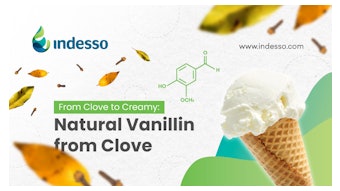
In a step to strengthen its oversight of food ingredients, the U.S. Food and Drug Administration (FDA) has issued a final rule detailing the criteria for deeming that the use of a substance in human or animal food is generally recognized as safe (GRAS).
"The clarified criteria for GRAS status should help stakeholders draw more informed conclusions about whether the intended conditions of use of a substance in food for humans or animals complies with the FD&C Act." - FDA
Unlike food additives, GRAS substances are not subject to FDA pre-market approval; however, they must meet the same safety standards as approved food additives, according to the FDA. GRAS status may be achieved either through the FDA’s voluntary GRAS notification program or through a properly conducted GRAS determination made by a private party. For instance, the Flavor and Extract Manufacturers Association (FEMA) Expert Panel only evaluates substances for GRAS status that are used to formulate flavors to be added to human foods.
"A preliminary review of the final rule shows that it is not substantially different from the 1997 proposed voluntary GRAS notification procedure," FEMA said in a written statement. "Additionally, the final rule does not focus on flavors nor does it mention the FEMA GRAS program."
FEMA added: "While the final rule provides additional clarification on issues related to the criteria for eligibility as a GRAS substance, the longstanding policies and procedures of the FEMA GRAS program are largely consistent with the final rule."
The Final Rule
In the FDA's final rule, several main clarifications include:
- A substance cannot be classified as GRAS under the conditions of its intended use if the available data and information do not satisfy the safety standard for a food additive under the FD&C Act;
- General recognition of safety requires common knowledge, throughout the expert scientific community, about the safety of substances directly or indirectly added to food. There should be a reasonable certainty that the substance is not harmful under the conditions of its intended use;
- “Common knowledge” can be based on either “scientific procedures” or on experience based on common use of a substance in food prior to January 1, 1958; and
- general recognition of safety through scientific procedures must be based upon the application of generally available and accepted scientific data, information, or methods, which ordinarily are published, as well as the application of scientific principles, and may be "corroborated," or supported by the application of unpublished scientific data, information, or methods.
- Establishes a procedure for submitting a GRAS notice and provisions governing the public disclosure of a GRAS notice, including the actions the FDA takes to make some information regarding a GRAS notice readily accessible to the public, among others.
Clarified Criteria for GRAS Status
The FDA is also amending its regulations to replace the voluntary GRAS affirmation petition process with a voluntary notification procedure under which any person may notify the FDA of a conclusion that a substance is GRAS under the conditions of its intended use.
"The clarified criteria for GRAS status should help stakeholders draw more informed conclusions about whether the intended conditions of use of a substance in food for humans or animals complies with the FD&C Act," the FDA said.
Also, the notification procedure will enable stakeholders to be aware of whether the agency has questioned the basis of a conclusion of GRAS status.
FDA Asks Companies to Help With Safety Monitoring
The FDA is strongly encouraging companies to inform the agency of GRAS conclusions through the notification procedure finalized with the rule. While the FDA can question the basis for an independent GRAS conclusion, whether notified or not, and take action as appropriate, "the notification procedure yields important information that aids the agency’s food safety monitoring efforts," the agency said.
Strengthening Oversight
The GRAS final rule is the most recent move the FDA has taken to strengthen its oversight of substances added to human and animal food. Next steps include issuing additional guidances related to the GRAS regulations. As part of the Foods and Veterinary Medicine Program’s Strategic Plan, the FDA said it will develop and implement regulatory and compliance strategies to improve premarket oversight and safety evaluation of human and animal food additives and GRAS substances.
Read the FDA Final Rule for GRAS in its entirety here.










